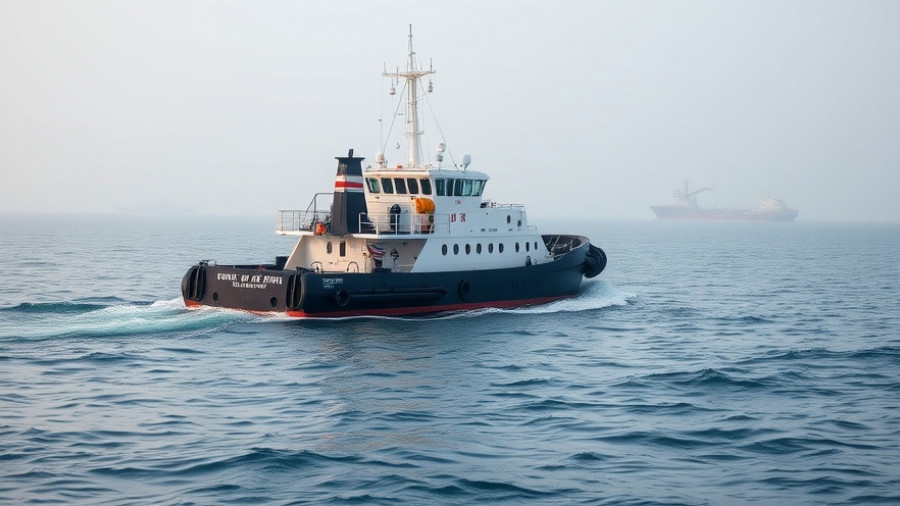
Japan Sets the Stage for Sustainable Tugboat Innovation
In a groundbreaking development for maritime technology, Tsuneishi Shipbuilding has officially delivered Japan's first hydrogen dual-fuel tugboat, named Ten-Oh. Built as part of The Nippon Foundation’s Zero Emission Ships Project, this 38-meter vessel boasts a hydrogen-powered internal combustion engine—marking a significant leap towards greener maritime operations.
A Revolutionary Tugboat: Design and Capabilities
What makes Ten-Oh particularly noteworthy is its dual-fuel capabilities. The tug is equipped with BeHydro's high-output hydrogen dual-fuel engine and a robust high-pressure hydrogen gas storage system, collaboratively developed by JPNH2YDRO, a joint venture between Tsuneishi Group and CMB.TECH. It utilizes twin 12-cylinder hydrogen-blended engines, generating 4,400 horsepower and capable of storing approximately 250 kg of hydrogen. This setup ensures that the tugboat can perform efficiently and reliably, comparable to conventional fuel-powered vessels, while significantly cutting CO₂ emissions.
Operational Safety and Reliability
One of the key concerns with emerging alternative fuel technologies is reliability. The design of the Ten-Oh addresses this, allowing for continued operation solely on marine fuel in the unlikely event of a hydrogen fuel system failure. This safety feature mirrors the standards set by traditional vessels, providing assurance as the industry transitions to eco-friendly fuels.
A Look into the Future: Hydrogen Technology in Maritime Operations
The introduction of Ten-Oh is not just a technological milestone; it represents a critical step in a broader movement towards sustainable maritime practices. With the global shipping industry under pressure to reduce emissions, hydrogen technology is emerging as a viable solution. Ten-Oh is set to undergo a series of demonstration voyages and bunkering operations between 2025 and 2026, facilitating trials that could spark wider implementation of hydrogen-powered vessels.
The Big Picture: Reducing CO₂ Emissions
Experiments and initiatives like this tugboat's launch are crucial in the fight against climate change. Leveraging hydrogen as a fuel source could potentially cut CO₂ emissions by about 60% compared to conventional tugboats. The success of Ten-Oh could pave the way for a new fleet of hydrogen-powered vessels, greatly impacting global shipping's carbon footprint.
Looking Beyond Tugboats: The Larger Implications for Shipping
This innovation is one piece in a broader puzzle involving multiple alternative fuel developments in shipping. Companies globally are exploring methanol and LNG vessels, aligning with the same objective: achieving lowering emissions across the maritime sector. Such initiatives speak to a future where cleaner fuels become the norm rather than the exception.
Final Thoughts: The Call for Sustainable Shipping
The journey towards a more sustainable maritime industry will require collaboration and commitment from all stakeholders—shipbuilders, regulators, and shipping companies alike. As the demand for greener transport solutions rises, investments in the development of hydrogen and other alternative fuels must accelerate. Ten-Oh serves not only as a monument of achievement but also as a clarion call for the future of shipping. Now it is up to the industry to embrace this shift thoughtfully, seeking innovations that push the envelope of what is achievable.
 Add Row
Add Row  Add
Add 




Write A Comment